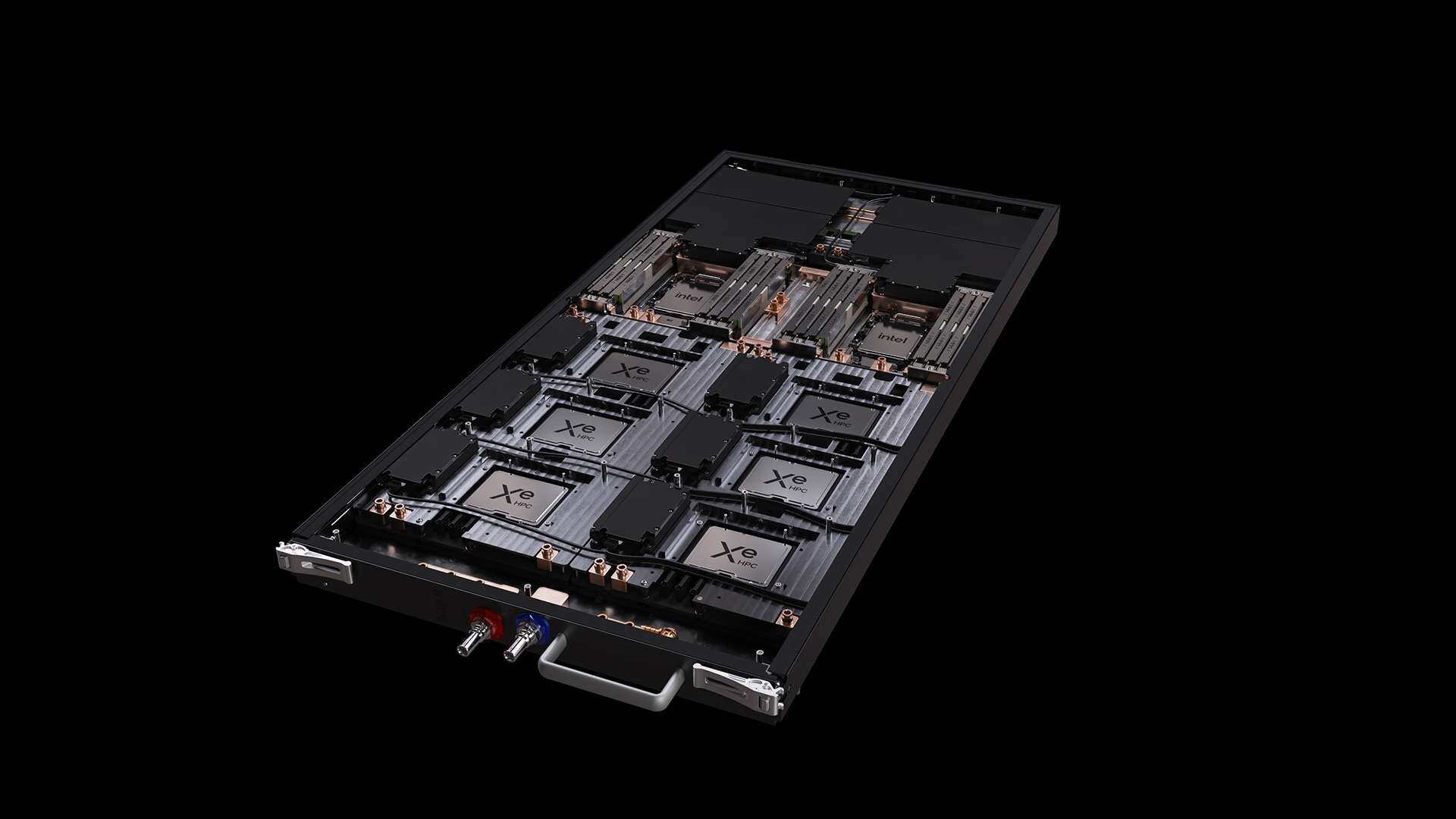
For Vision 2022, Intel also took another look at the Aurora supercomputer. You can see the progress, but one thing is missing: Intel. The first test modules are already being delivered, but it is actually no longer possible to use the system productively this year. This is also the goal of the application phase.
The almost endless delay of the Aurora supercomputer will not be eliminated for Vision 2022, as Intel’s internal showcase is called in the spring of this year. Intel made that clear on stage by explaining that the infrastructure, including the cooling, DOAS storage system, and management nodes, was ready. But the crucial elements are still missing: the compute nodes.
“Many people want to know more about Aurora” -Raja
“We have installed storage, management and cooling nodes.” -Rick Stevens
So there are no compute nodes yet. #aurora2018 #HPC pic.twitter.com/uWyNvGF8qT— Fernanda Foertter | 🇧🇷🇺🇸🥑👩🏽💻🤓 (@hpcprogrammer) May 10, 2022
intelligence passed this with the system image description: The DAOS storage system, management nodes and cooling infrastructure are already installed. There is still no trace of the compute nodes, each with two Sapphire Rapids processors and six Ponte Vecchio chips. There will be thousands of nodes in total. Intel again explained that both 20,000 Sapphire Rapids chips are required in the version with HBM2e and 60,000 Ponte Vecchio accelerators.
As part of the keynote address on Vision 2022, Raja Koduri shared the stage with the head of the Argonne Laboratory, where the supercomputer will be located. He explained that Aurora will now build (as of 1:21:00). The first validation systems have now finally been delivered by Intel, it is said. Now the final interaction can be tested.
This lines up with what other senior Intel employees have said. In the quarterly report two weeks ago, Intel emphasized that the delivery of Sapphire Rapids had started. The head of the data center division, Sandra Riviera, justified it yesterday on stage with the same statement and the corresponding wafer. It is the delivery of Initial SKUs, that is, the first chips that traditionally go to lighthouse projects, something like Aurora. The actual product launch will take place sometime in the coming weeks and months. The fact that Sapphire Rapids are undoubtedly late has already become clear in recent months and years. According to the original plan, Sapphire Rapids will be completed approximately 1.5 years behind schedule.
Do you have #Data center workloads in #AI, #cloud, #security, #networks and more?
4th generation #XeonScalable The processor, also known as Sapphire Rapids, is shipping initial SKUs today. https://t.co/aEKlDDCLYV #IntelON pic.twitter.com/VxlI33baOu
— Intel News (@intelnews) May 10, 2022
Researchers can now request adaptation of their software for the supercomputer during the testing phase or develop entirely new ones so that productive work can begin immediately when the official start signal is given. On paper, the launch will probably still take place in 2022 so that it can celebrate at least a small success after endless delays. But the system probably won’t be accessible to “everyone” until 2023.

Introvert. Beer guru. Communicator. Travel fanatic. Web advocate. Certified alcohol geek. Tv buff. Subtly charming internet aficionado.


